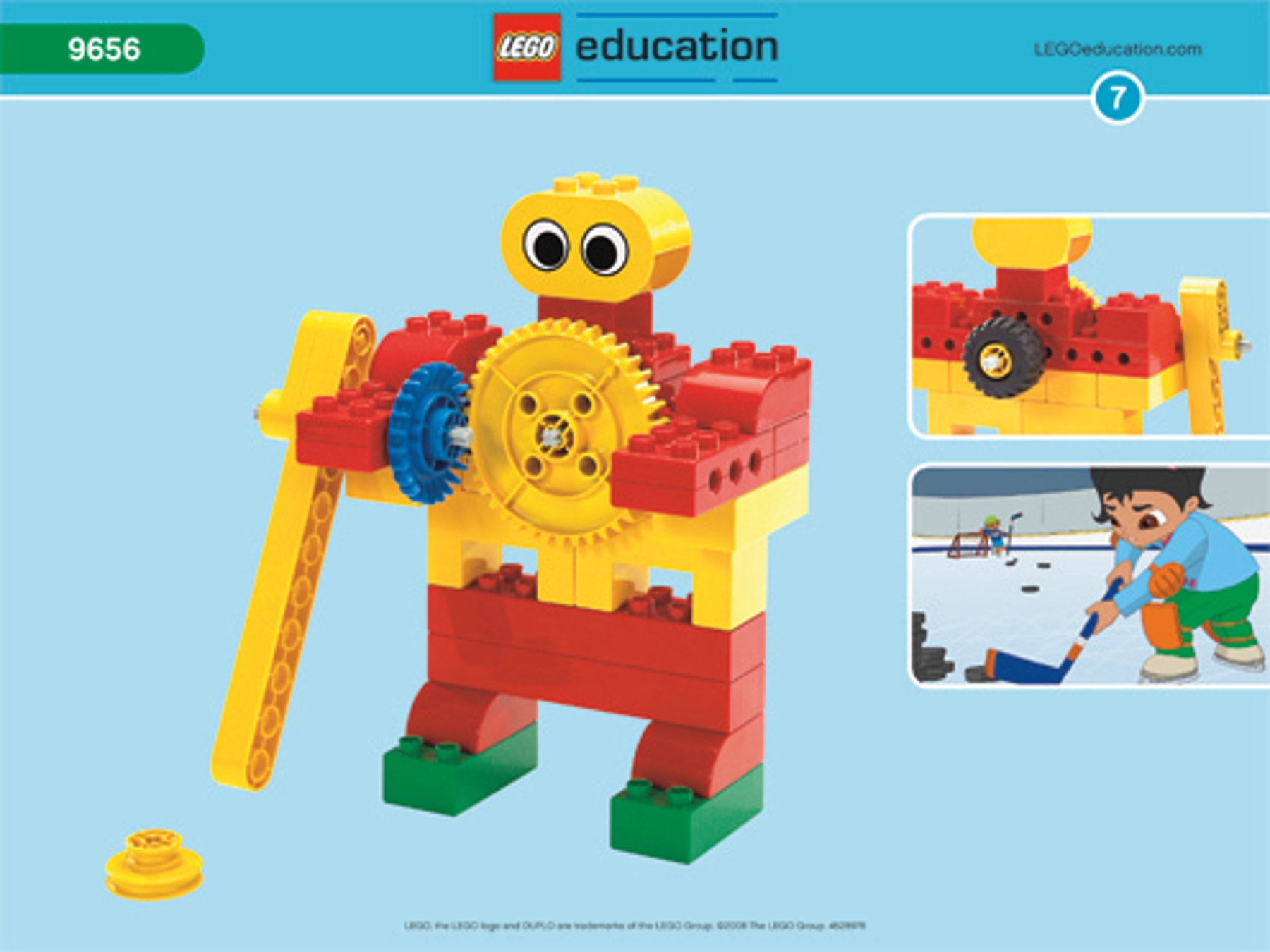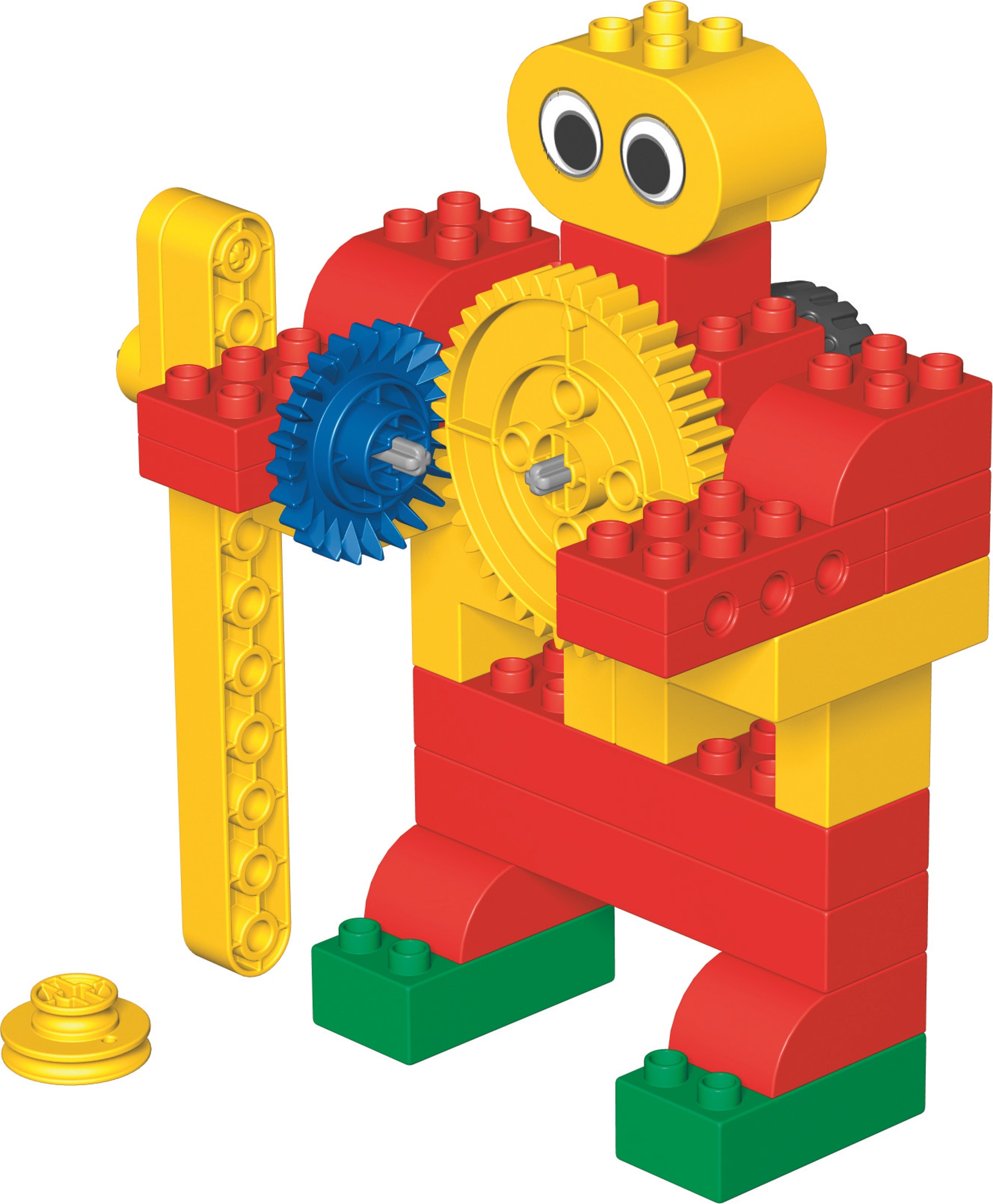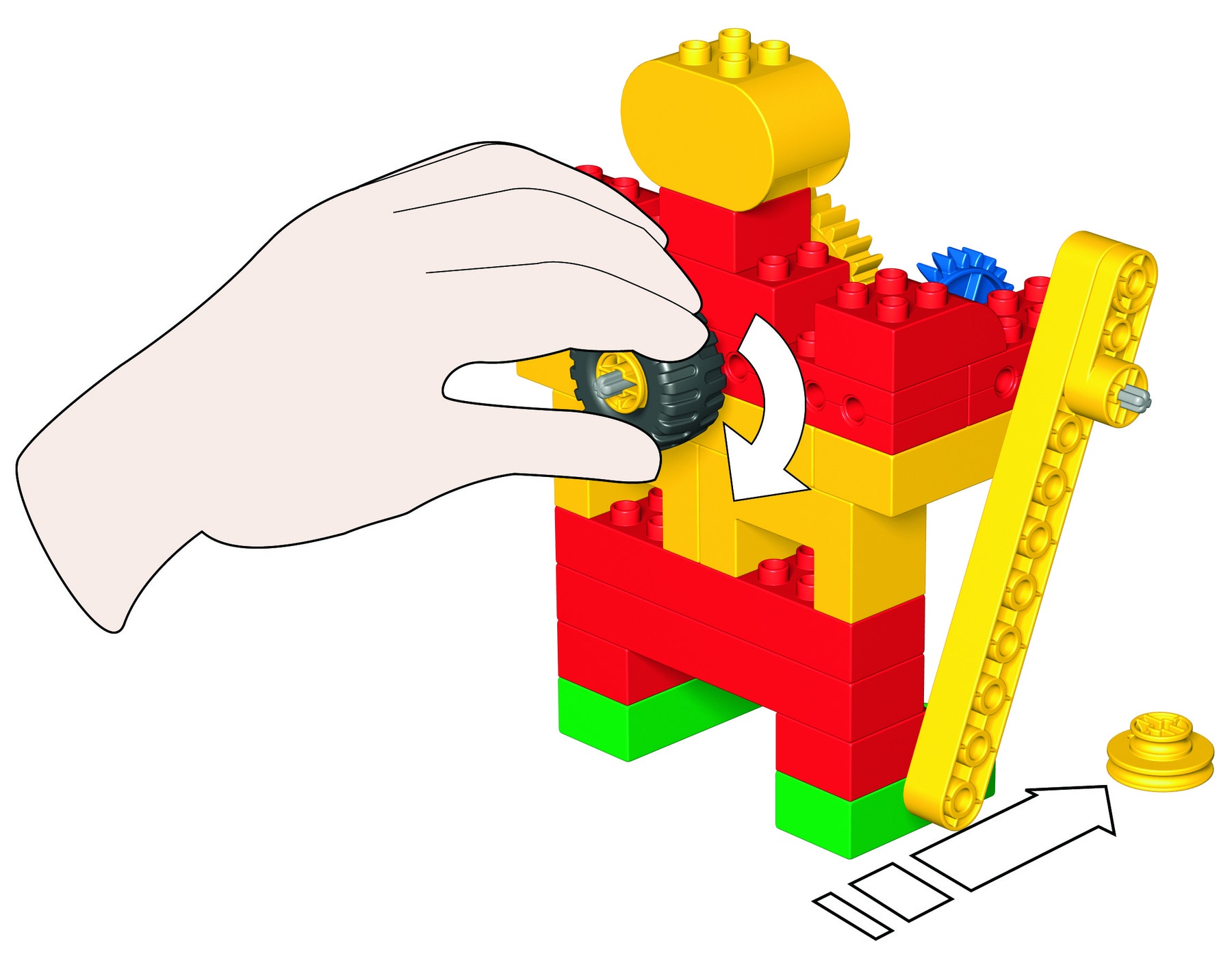Ice Hockey Player
Exploring stability and motion, movement, and energy.

Connect
(5-10 Minutes)
Sam is a great ice hockey goalkeeper and Sara is fantastic in attack. They have arranged an ice hockey match against the school’s best ice hockey team. Sara believes their biggest problem is making the difficult long shots. To become unbeatable Sara says that all they need is a big third team member to stand in the middle of the field and do good long shots. Sam thinks that’s the best idea ever!
Can you help Sam and Sara build a third team member that is good at long shots?
Let’s find out!

Construct
(5-10 Minutes)
Build the ice hockey player using building instructions no. 7.

Build the ice hockey player using building instructions no. 7
- Turn the handle on the back of the ice hockey player to make sure the arm swings freely
- Place a yellow pulley wheel in front of the arm, turn the handle on the back and hit the pulley wheel
- If the arm doesn’t hit the pulley wheel then check if the arm is built as shown in the building instruction


Make the Field
- Measure and mark your shooting zones at distances 12 in and 20 in
- Make a goal using bricks

Contemplate
(10-15 Minutes)
Easy or difficult?
Scoring at a distance can be difficult. Find out which level of difficulty it will be for the ice hockey player to score.
First predict at which distance it will be easy and at which it will be difficult for the ice hockey player to score.
Write down your predictions using the words on the worksheet.
Next, test how difficult it is to score from the two distances.
Write down your findings using the words on the worksheet.

Have the students reflect on their tests by asking questions such as:
What did you predict would happen and why?
Describe what happened.
How did you make sure your tests were fair?
Did the ice hockey player always shoot from the same position?Describe how the model works.
Continue
(10-15 Minutes)
Far or further?
Find out which, one or two bricks, can be shot further.
First try to predict which, one or two bricks, can be shot far and which can be shot further.
Write down your predictions using the words on the worksheet.
Next, test to see if what happens is what you have predicted.
Write down your findings using the words on the worksheet.

Teacher Support
Students will learn about:
How movement can be described in many ways
How push and pull affect the movement
9656 Early Simple Machines Set (two students per set recommended)
Minimum 2 yards of smooth floor
Ruler
NGSS
Disciplinary Core Ideas: Physical Science
1 MS-PS2 Motion and Stability: Forces and Interactions
Crosscutting Concepts
Cause and effect: mechanism and explanation
Scale, proportion, and quantity
Science and Engineering Practices
Asking questions and defining problems
Developing and using models
Planning and carrying out investigations
Using mathematics, Informational and Computer Technology, and computational thinking
Obtaining, evaluating, and communicating information
Common Core State Standards for Mathematics
Mathematical Practice
MP1 Make sense of problems and persevere in solving them
MP4 Model with mathematics
MP5 Use appropriate tools strategically
MP6 Attend to precision
MP7 Look for and make use of structure
Measurement & Data
K.MD.A / 1.MD.A / 1.MD.C / 2.MD.A / 2.MD.D
Writing Standards
W.K.2 / W.1.2 / W.2.2
Speaking and Listening
SL.K.1 / SL.K.3 / SL.K.5 / SL.K.6 / SL.1.1 / SL.1.3 / SL.1.5 / SL.2.1 / SL.2.3 / SL.2.4
Student Material
Share with:
 Google Classroom
Google Classroom



